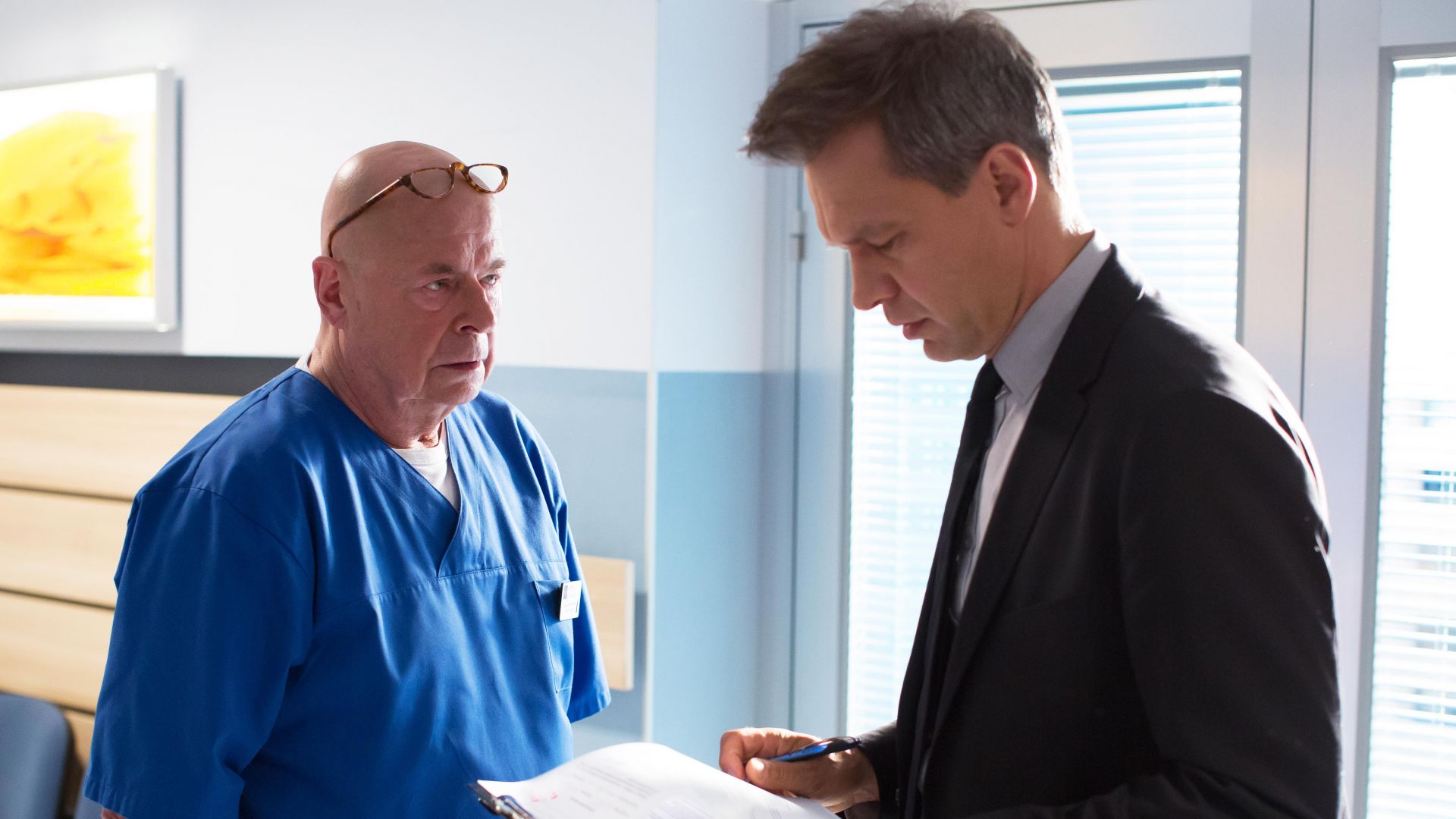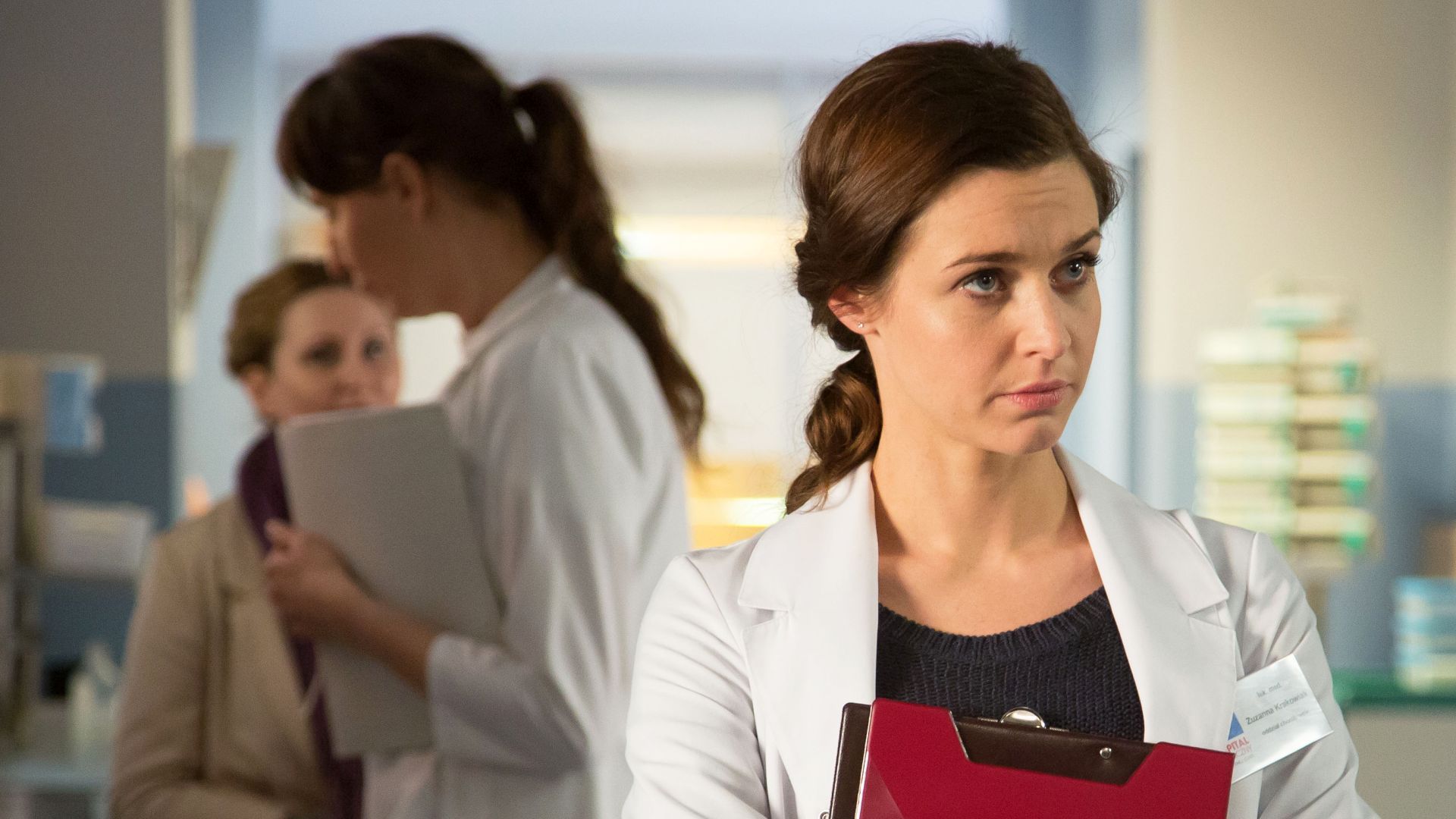Na Dobre I Na Złe: Timeless Polish Hospital Drama A TV Series that has held the attention and hearts of millions of viewers for over 20 years?
Editor's Notes: Na Dobre I Na Złe: A Timeless Polish Hospital Drama has published today: March 8, 2023. The reason we believe this topic is important to read is because Polish viewers should read about their country's longest-running medical drama.
We spent hours doing some analysis, digging information, and made Na Dobre I Na Złe: A Timeless Polish Hospital Drama so we put together this Na Dobre I Na Złe: A Timeless Polish Hospital Drama guide to help You make the right decision if you are interested in watching.
Key differences or Key takeways
| Key different | Na Dobre I Na Złe: A Timeless Polish Hospital Drama |
|---|---|
| Status: | Still ongoing/airing |
| Genre: | Drama, Medical |
| Original language: | Polish |
| Number of seasons: | 27 |
| Number of episodes: | 826 (as of march 2023) |
| Original network: | TVP2 |
Transition to the main article topics
Overview:
Na Dobre I Na Złe is a Polish medical drama television series that has been airing on TVP2 since 1999. It is the longest-running medical drama in Poland and one of the most popular television series in the country. The series follows the lives of the doctors and nurses at the Leśna Góra Hospital in Warsaw. It has been praised for its realistic portrayal of the Polish healthcare system and its engaging storylines.
Characters:
The series features a large cast of characters, including doctors, nurses, patients, and their families. The main characters are Dr. Piotr Gawryło (Krzysztof Pieczyński), Dr. Lena Starska (Anita Sokołowska), and Dr. Wiktor Banach (Bartosz Opania). These characters have been with the series since its inception and have become iconic figures in Polish popular culture.
Storylines:
The series has covered a wide range of medical and social issues over the years. These issues have included the privatization of healthcare, the shortage of doctors and nurses, and the ethical dilemmas faced by medical professionals. The series has also been praised for its realistic portrayal of the personal lives of its characters.
Impact:
Na Dobre I Na Złe has had a significant impact on Polish society. The series has helped to raise awareness of the challenges facing the Polish healthcare system and has inspired many young people to pursue careers in medicine. The series has also been credited with helping to break down the stigma associated with mental illness.
Conclusion:
Na Dobre I Na Złe is a timeless Polish hospital drama that has captured the hearts of millions of viewers over the years. The series has been praised for its realistic portrayal of the Polish healthcare system, its engaging storylines, and its memorable characters. Na Dobre I Na Złe is a must-watch for anyone interested in Polish culture or medical dramas.

Na dobre i na złe, odcinek 868: Maks Beger nigdy nie odzyska sprawności - Source superseriale.se.pl
FAQ
Na Dobre I Na Złe, a long-running Polish medical drama, has captivated audiences for over two decades. This FAQ section aims to address common questions and provide insightful information about the show.

Kiedy będą powtórki serialu "Na dobre i na złe"? - Szopi.pl - Source szopi.pl
Question 1: What is the significance of Na Dobre I Na Złe?
Na Dobre I Na Złe stands as one of Poland's most popular and enduring television dramas. Its realistic portrayal of hospital life, compelling characters, and exploration of ethical dilemmas have earned it critical acclaim and a devoted following.
Question 2: How long has Na Dobre I Na Złe been on the air?
Na Dobre I Na Złe debuted in 1999 and has been continuously broadcast since then, making it one of the longest-running television series in Polish history.
Question 3: Where is Na Dobre I Na Złe filmed?
The primary filming location for Na Dobre I Na Złe is the Copernicus Hospital in Warsaw, Poland. Some scenes are also shot in other locations, including outdoor settings and other medical facilities.
Question 4: What are the main themes explored in Na Dobre I Na Złe?
Na Dobre I Na Złe delves into a wide range of themes, including medical ethics, interpersonal relationships, the challenges of healthcare, and the personal lives of its characters.
Question 5: Who are some of the most notable characters in Na Dobre I Na Złe?
The show features a vast ensemble cast, but some of the most iconic characters include Dr. Wiktor Banach, Dr. Hanna Goldberg, Dr. Piotr Gawryło, and Dr. Zofia Stankiewicz.
Question 6: Why has Na Dobre I Na Złe remained so popular for so long?
Na Dobre I Na Złe's enduring popularity can be attributed to its relatable characters, engaging storylines, and its ability to reflect contemporary societal issues through the lens of hospital life.
In conclusion, Na Dobre I Na Złe is a multifaceted and impactful television drama that has left an enduring mark on Polish television. Its exploration of medical ethics, human relationships, and the complexities of healthcare has resonated with audiences for over two decades.
Proceed to the next article section for further insights into Na Dobre I Na Złe.
Tips
The Polish medical drama Na Dobre I Na Złe: A Timeless Polish Hospital Drama has captivated audiences for over two decades with its realistic portrayal of life in a hospital. Here are some tips inspired by the show that can help you navigate the complexities of the medical field.
Tip 1: Communication is key
Clear and concise communication is essential in a hospital setting. Make sure you understand your patient's needs and concerns, and keep them informed of their condition and treatment plan. Effective communication helps build trust between patients and healthcare providers and can improve patient outcomes.
Tip 2: Teamwork is essential
A hospital is a complex environment where many different professionals work together. It is important to collaborate effectively, share information, and support each other. Teamwork ensures that patients receive the best possible care and that everyone is working towards the same goal.
Tip 3: Stay up-to-date on the latest medical advancements
Medicine is constantly evolving, and it is important for healthcare professionals to stay up-to-date on the latest advancements. This includes reading medical journals, attending conferences, and participating in continuing education programs. By staying informed, you can provide your patients with the most effective and innovative care.
Tip 4: Be compassionate and empathetic
Patients in a hospital are often going through a difficult time. It is important to be compassionate and empathetic towards them and their families. Listen to their concerns, offer support, and treat them with respect. Compassionate care can make a significant difference in the healing process.
Tip 5: Don't give up on your patients
There will be times when patients are facing seemingly insurmountable challenges. It is important to never give up on them. Continue to provide them with hope, support, and the best possible care. Sometimes, a little bit of encouragement can make all the difference.
These tips can help you navigate the complexities of the medical field and provide your patients with the best possible care. Remember, healthcare is not just about treating illnesses; it is also about providing compassion, support, and hope.
Na Dobre I Na Złe: A Timeless Polish Hospital Drama
The Polish hospital drama "Na Dobre I Na Złe" stands as a testament to compelling storytelling and relatable characters, capturing the hearts of viewers for over two decades. Its timeless appeal can be attributed to several key aspects:
- Compelling Characters: Memorable and flawed, the characters drive the emotional core of the show, showcasing the complexities of human relationships in a demanding environment.
- Medical Realism: The series provides a realistic portrayal of the daily challenges faced by medical professionals, offering insights into the complexities of healthcare.
The chemistry between the cast and the authenticity of the medical scenarios contribute to the show's enduring success. "Na Dobre I Na Złe" not only entertains but also prompts contemplation about the human condition, the value of life, and the resilience of the human spirit.

Na dobre i na złe - Source vod.tvp.pl
Na Dobre I Na Złe: A Timeless Polish Hospital Drama
The Polish medical drama series "Na Dobre I Na Złe" (In Good and Bad Times) has been captivating audiences for over two decades due to its realistic and engaging portrayal of life in a hospital. The show's connection to both personal and social issues in Poland and beyond has made it a cultural phenomenon and a timeless classic in Polish television. One of the key connections that make this show so compelling is its exploration of the human condition, through its characters and their struggles with illness, relationships, and ethical dilemmas.

Na dobre i na złe - odc. 588 – Dmuchać na zimne (serial online - Source vod.tvp.pl
The show's writers and producers have consistently presented complex and relatable characters, each with their own unique backstories, motivations, and flaws. Through these characters, the show explores universal themes such as love, loss, redemption, and the search for meaning in life. "Na Dobre I Na Złe" has also tackled controversial issues such as abortion, euthanasia, and organ donation, sparking important discussions and raising awareness about these topics in Polish society.
The show's focus on personal stories and ethical dilemmas has also allowed it to connect with audiences on a deeper level. The characters are faced with difficult choices and moral dilemmas that force them to confront their own beliefs and values. This has created a sense of realism and authenticity that has resonated with viewers, making them feel invested in the characters' lives.
"Na Dobre I Na Złe" has showcased the dedication and professionalism of medical professionals, showcasing the challenges and rewards of working in a hospital setting. The show has also highlighted the importance of teamwork, compassion, and ethical behavior in the medical field.
In conclusion, "Na Dobre I Na Złe" has stood the test of time due to its realistic portrayal of life in a hospital, relatable characters, and its exploration of universal themes and ethical dilemmas. The show has connected with audiences on a deep level and has become a cultural phenomenon that continues to resonate with viewers.